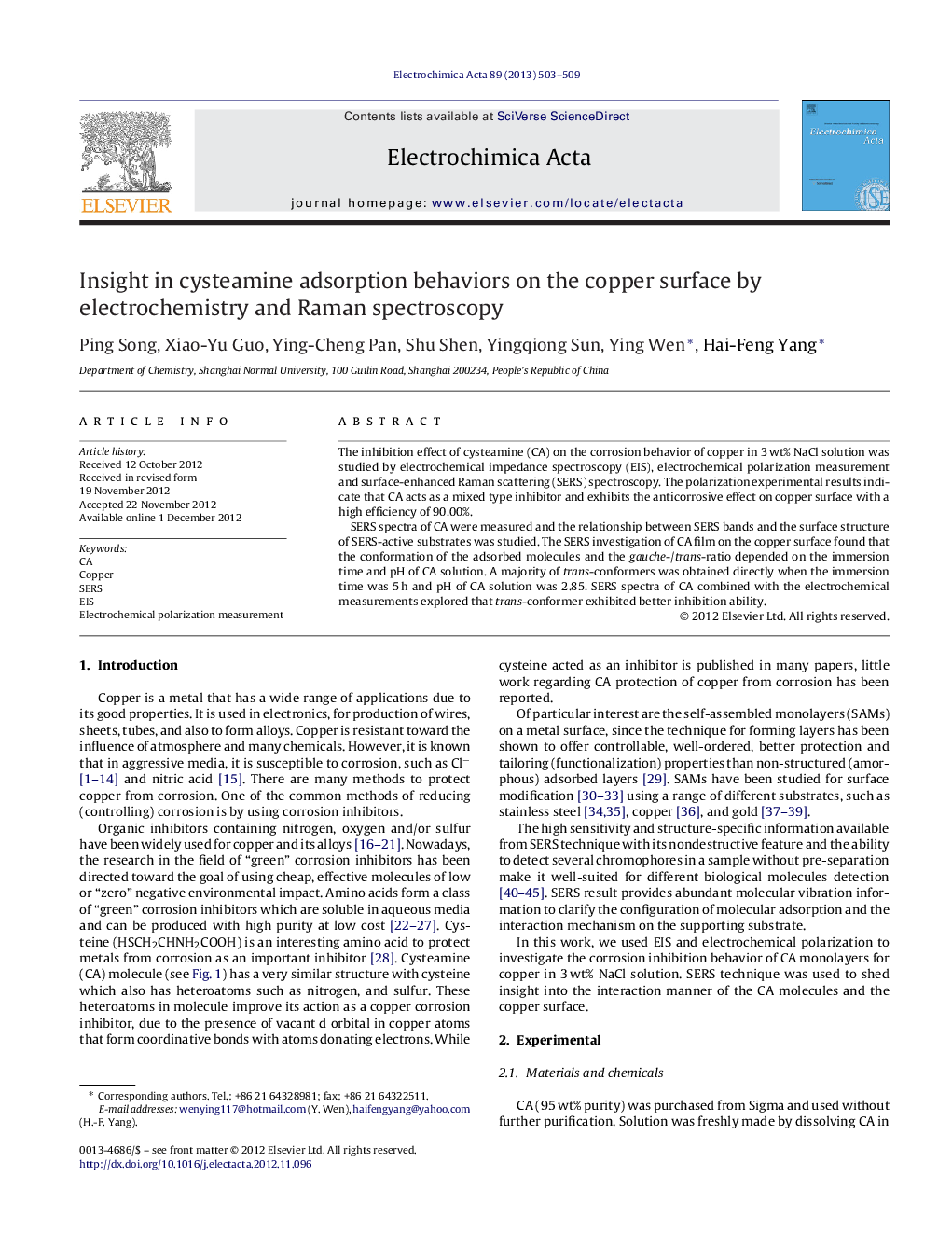| Article ID | Journal | Published Year | Pages | File Type |
|---|---|---|---|---|
| 187629 | Electrochimica Acta | 2013 | 7 Pages |
The inhibition effect of cysteamine (CA) on the corrosion behavior of copper in 3 wt% NaCl solution was studied by electrochemical impedance spectroscopy (EIS), electrochemical polarization measurement and surface-enhanced Raman scattering (SERS) spectroscopy. The polarization experimental results indicate that CA acts as a mixed type inhibitor and exhibits the anticorrosive effect on copper surface with a high efficiency of 90.00%.SERS spectra of CA were measured and the relationship between SERS bands and the surface structure of SERS-active substrates was studied. The SERS investigation of CA film on the copper surface found that the conformation of the adsorbed molecules and the gauche-/trans-ratio depended on the immersion time and pH of CA solution. A majority of trans-conformers was obtained directly when the immersion time was 5 h and pH of CA solution was 2.85. SERS spectra of CA combined with the electrochemical measurements explored that trans-conformer exhibited better inhibition ability.
Graphical abstractFigure optionsDownload full-size imageDownload as PowerPoint slideHighlights► We investigated corrosion inhibition and mechanism of cysteamine adsorbed on copper. ► SERS analysis indicated cysteamine molecules adsorbed on copper by two conformers. ► The electrochemical tests showed trans-conformer was good for inhibition. ► The immersion time and pH of cysteamine solution influenced the conformers.
